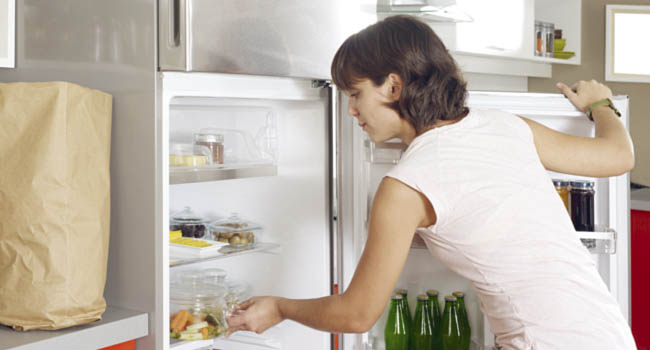How to express and store breast milk for your baby

Expressing breast milk, by hand or machine, can be a really useful option to help you feed your baby breast milk when you might not be available. It can also be important in the management of some breast feeding problems such as mastitis, is helpful for when your child is sick or preterm, if you and your baby are temporarily separated or you’re returning to work.
The two ways you can express breast milk
You can either express milk by hand or machine – it’s about what feels right for you. But no matter what you choose, a comfortable, relaxing and private environment is important. You’ll need to have all equipment ready at hand, as well as a glass of water nearby to keep hydrated.
Hand expressing
You can ask your midwife to teach you how to hand express. Here’s our step-by-step guide:
- Wash your hands with warm soapy water, then dry them thoroughly
- Gently massage your breast, starting at the top and massaging down and towards your nipple – including the underside of your breast too. Keep doing this for several minutes until your whole breast is thoroughly massaged
- Collect the milk in a sterilised plastic dish by holding it under your breast. You can do this either by sitting the dish on a table, or holding between your legs – just make sure your hands are free
- Use your thumb and finger to gently press together towards the nipple
- Repeat with a continuous motion until the milk flow has stopped
- Store safely (see below)
Pumping by machine
The most effective and efficient way to express milk with a machine is with a hand or electrical pump. Here’s our step-by-step guide.
- Wash your hands with warm soapy water, then dry them thoroughly
- Make sure all pump attachments are properly cleaned and sterilised
- Gently massage your breast, starting at the top, massaging down and towards your nipple – including the underside of the breast too
- Place the breast cup over the nipple and areola, making sure you have the correct size
- If you’re using an electric pump, start the pump on low and gradually increase the strength of the suction
- Continue pumping until your breast is soft, before moving to your other breast. There are some pump machines that allow you to pump both breasts simultaneously, which can save you time and even produce more milk
- Store safely (see below)
How to safely store your expressed breast milk
Breast milk is precious. So knowing how to store it correctly is vital – it’s the best way of ensuring important nutrients are preserved, and the risk of bacterial contamination is decreased. Below you’ll find a helpful step-by-step process, as well as the correct storage guidelines:
- Wash your hands with warm soapy water, and dry them thoroughly
- Use clean and sterilised plastic or glass containers and use separate containers for each time you express – don’t add fresh expressed milk to previously refrigerated or frozen expressed milk
- Date the container – it’s a simple way to ensure you’re using the older expressed milk first
Storage Guidelines for safe handling of expressed breast milk
Source: Food and Nutrition Guidelines for Healthy Infants and Toddlers (Aged 0-2) [Ministry of Health]
Storage of breast milk
- Stored at room temperature (less than 26°C) - 4 hours - Ensure containers are covered and kept as cool as possible
- Refrigerated breast milk (less than 4°C) - 48 hours - Store covered containers in the back of the main body of the refrigerator
Frozen breast milk: Store covered containers towards the back of the freezer where the temperature is most constant
- Freezer box within a refrigerator - 2 weeks
- Separate door fridge/freezer - 3 – 6 months
- Separate deep freeze - 6 – 12 months
Thawing expressed breast milk safely
- Thaw frozen breast milk either in the refrigerator or in a bowl of warm water. Once thawed use straight away
- Ensure all equipment you use is clean and sterilised
Do not thaw expressed breast milk in the microwave as this destroys the living cells present in the milk.
Storage of expressed breast milk while travelling
Your expressed breast milk can remain safe while travelling for up to 4 hours if kept cold in a thermos flask. Ensure you use a clean and sterilised flask that hasn’t been used for any other food or drink. Only use the thermos to carry cold milk, as there could be an increase of bacterial growth if carrying warm milk.
Feeding expressed breast milk to your baby
When it comes to feeding your baby expressed breast milk, here are a few things to keep in mind, so the experience can be as comfortable as possible:
- Warm the breast milk by placing the container in a bowl of hot water. Swirl the container around afterwards to make sure the heat is distributed evenly
- Test the temperature of the milk on the inside of your wrist, making sure it’s comfortably warm
- Don’t warm the expressed milk in a microwave and be sure to use it within two hours
- You can feed expressed milk by using a bottle, a cup or a spoon. Always make sure you have all types of cleaning equipment on hand
- Make sure that all left over milk is thrown out and not reheated for future use
References
National Health and Medical Research Council (2012) Infant Feeding Guidelines. Canberra: National Health and Medical Research Council.
Kids Health. Storing breast milk - accessed 29th December 2015.
Ministry for Primary Industries - Safe feeding for Infants - accessed 29th December 2015.
Ministry of Health - Eating for healthy babies and toddlers – from birth to 2 years old - accessed 29th December 2015.